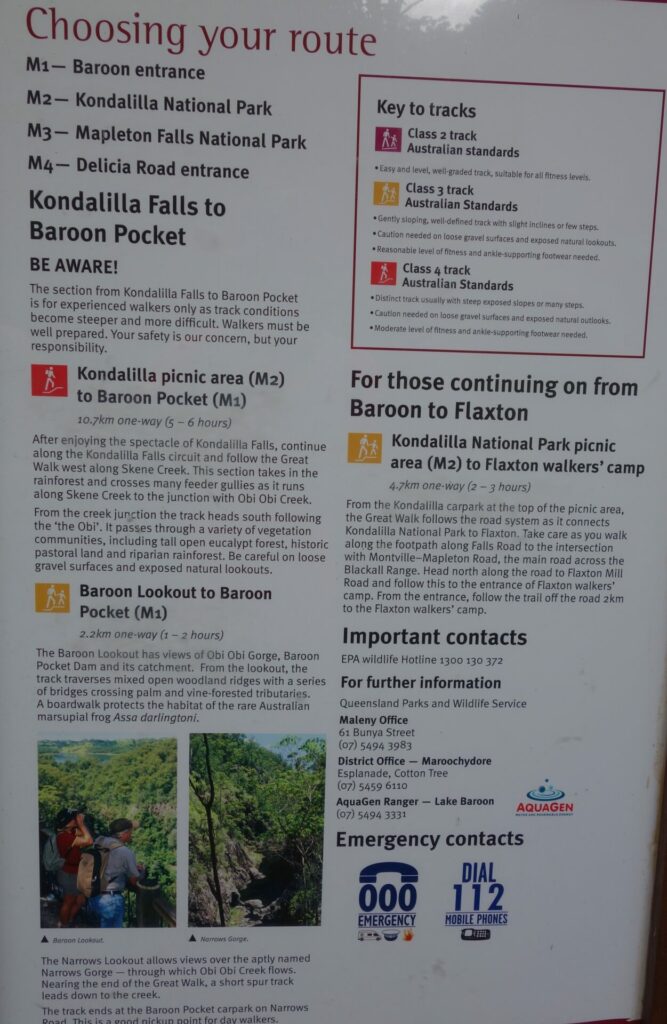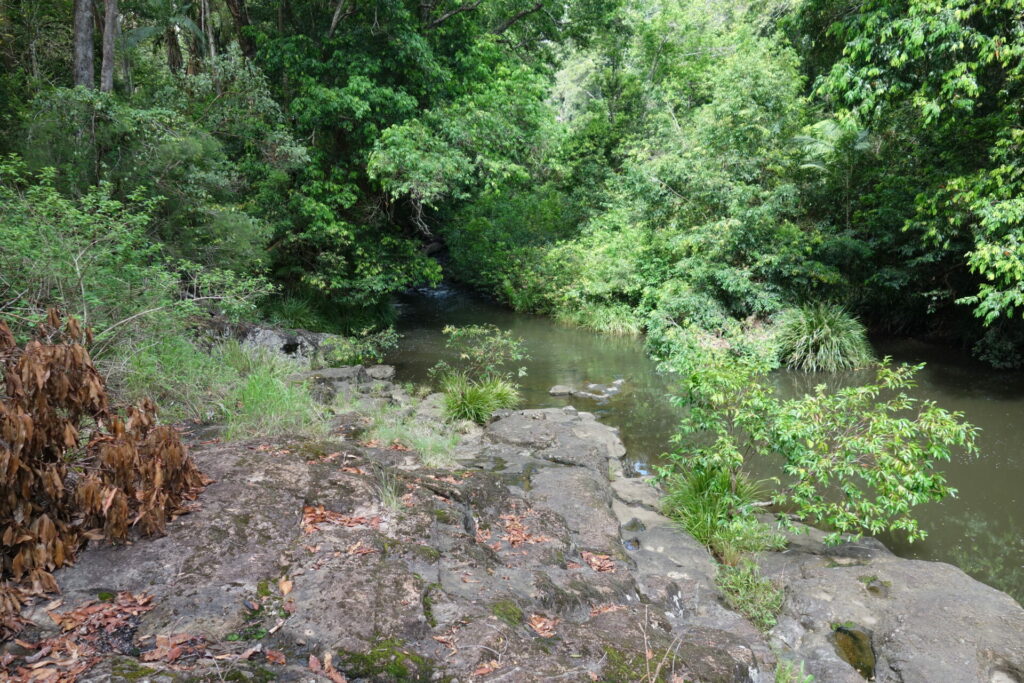Inspired by Dave Goggin’s quote “Let’s get after it” Trail43 took the trail running challenge to Queensland for December 2020. Testing our game in the tropical jungles of the Sunshine Coast Hinterland. Braving heat, snakes, and mosquitos. We hit the trails to bring fans new and exciting trail running reports.
Located within the Kondalilla National Park, Kondalilla, the aboriginal term for “rushing water”, is just that. It’s 80+ meters of rushing water plummeting into a breathtaking valley.

There is heaps of parking in the Kondalilla Falls car park. From there walk 100-metres downhill (with steps) to a large grassed picnic area with barbecues, picnic tables, and importantly toilets. From here you will see several trails (see extract left). Kondalilla picnic area to Baroon Pocket is the optimal trail running track with options to turnaround throughout the 10.7km one-way segment. 6km into the trail there is a waterhole which makes the ideal turnaround point. This trail effectively works out as an extended Kondalilla Falls Circuit (4.7 km) track. The trail includes steep ascents and descents along with flat and undulating terrain which proves to be an excellent calf workout.
The trail starts through the rainforest and open forest passing several delightful rock pools and small waterfalls at the top of the falls. Take your time here and soak up the majestic beauty which attracts a multitude of visitors during business hours. We recommend running this trail as early as possible to avoid crowds. Continue on the Kondalilla Falls circuit, descending into the lush rainforest as you walk down to the valley for the best waterfall view at the base of the falls.
At the base of the falls, you will have the option to loop back on the shorter 4.7km circuit or continue the trail (via the “Great Walk” signage) which winds through wet eucalyptus forest and pristine rainforest. Above the falls, tall open eucalypt forest mingles with rainforest species in wetter areas. While a drier forest grows on the western side of the falls, featuring casuarinas with a grass tree understorey.
It is interesting to note that the park is an important refuge for many animals and plants including the pouched frog, Assa darlingtoni, and the bopple nut, Macadamia ternifolia, which is vulnerable to extinction. More than 107 species of birds have been seen in the park, and 70 species of reptiles and 32 species of frogs have been recorded from the Blackall Range and nearby Conondale Range.





Once we moved beyond the heavily trafficked Kondalilla Falls Circuit we spotted diamond-back pythons, common death adders, common tree goannas, and a multitude of birds. Such an abundance of animal sightings is a testament to the park’s biological diversity and importance as a refuge to native flora and fauna.



The trail continues along the riparian rainforest lined creek. Look out for strangler figs that have killed their host trees and created a “columnar tree” with a hollow central core. Also, be aware that numerous tree-falls bring parts of the track to an abrupt end. Take care navigating past these to avoid getting lost.



The Trail43 team decided to turn around 6km into the trail. This point was marked with a large waterhole as captured left. This large swimming hole is surrounded by trees, native flora, and rocks. It is a great place for a water break. It is also deep enough for a proper swim to cool off mid-run. Maybe bring a swimsuit with you so you can enjoy it.
From here make your way back along the creek and through the forest. Note the Red cedar, blackbutt, tallowwood trees which were heavily logged in the area before first being protected in 1906 as a small recreational area and becoming a national park in 1945.
What goes down must come back up! As you climb the ridge, and the 300+ stairs keep an eye out for emergent bunya pines with their distinctive symmetrical dome shapes, dense stands of piccabeen palms, and intriguing shapes of pink ash which are particularly present around the water pools.
Running in Queensland, particularly during summer presents the added issue of heat exhaustion and dehydration. This trail was best run early morning with plenty of water. Make to also bring a camera to capture the idyllic scenes and wildlife.




